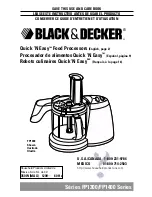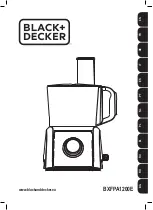
Host Interface (HI08)
HI08-External Host ProgrammerÕs Model
MOTOROLA
DSP56309UM/D 6-21
The CVR is a special command register by which the host processor issues commands to
the DSP56309. Only the host processor can access this register.
Host processors can use standard host processor instructions (e.g., byte move) and
addressing modes to communicate with the HI08 registers. The HI08 registers are
aligned so that 8-bit host processors can use 8/16/24-bit load and store instructions for
data transfers. The HREQ/HTRQ and HACK/HRRQ handshake flags are provided for
polled or interrupt-driven data transfers with the host processor. Because of the speed of
the DSP56309 interrupt response, most host microprocessors can load or store data at
their maximum programmed I/O instruction rate without testing the handshake flags
for each transfer. If full handshake is not needed, the host processor can treat the
DSP56309 as a fast device, and data can be transferred between the host processor and
the DSP56309 at the fastest host processor data rate.
One of the most innovative features of the host interface is the host command feature.
With this feature, the host processor can issue vectored interrupt requests to the
DSP56309. The host can select any of 128 DSP interrupt routines for execution by writing
a vector address register in the HI08. This flexibility allows the host processor to execute
up to 128 pre-programmed functions inside the DSP56309. For example, use of the
DSP56309 host interrupts can allow the host processor to read or write DSP registers (X,
Y, or program memory locations), force interrupt handlers (e.g., SSI, SCI, IRQA, IRQB
interrupt routines), and perform control and debugging operations.
Note:
When the DSP enters stop mode, the HI08 signals are electrically disconnected
internally, thus disabling the HI08 until the core leaves stop mode. While the
HI08 configuration remains unchanged in stop mode, the core cannot be
restarted via the HI08 interface.
Do not issue a STOP command to the DSP via the HI08 unless some other
mechanism for exiting stop mode is provided.
Summary of Contents for DSP56309
Page 25: ...xxii DSP56309UM D MOTOROLA Figure D 25 Port E Registers PCRE PRRE PDRE D 39 ...
Page 30: ...MOTOROLA DSP56309UM D 1 1 SECTION 1 DSP56309 OVERVIEW ...
Page 47: ...1 18 DSP56309UM D MOTOROLA DSP56309 Overview DSP56309 Architecture Overview ...
Page 48: ...MOTOROLA DSP56309UM D 2 1 SECTION 2 SIGNAL CONNECTION DESCRIPTIONS ...
Page 85: ...2 38 DSP56309UM D MOTOROLA Signal Connection Descriptions OnCE JTAG Interface ...
Page 86: ...MOTOROLA DSP56309UM D 3 1 SECTION 3 MEMORY CONFIGURATION ...
Page 104: ...MOTOROLA DSP56309UM D 4 1 SECTION 4 CORE CONFIGURATION ...
Page 124: ...MOTOROLA DSP56309UM D 5 1 SECTION 5 GENERAL PURPOSE I O ...
Page 125: ...5 2 DSP56309UM D MOTOROLA General Purpose I O 5 1 INTRODUCTION 5 3 5 2 PROGRAMMING MODEL 5 3 ...
Page 128: ...MOTOROLA DSP56309UM D 6 1 SECTION 6 HOST INTERFACE HI08 ...
Page 166: ...MOTOROLA DSP56309UM D 7 1 SECTION 7 ENHANCED SYNCHRONOUS SERIAL INTERFACE ESSI ...
Page 212: ...MOTOROLA DSP56309UM D 8 1 SECTION 8 SERIAL COMMUNICATION INTERFACE SCI ...
Page 241: ...8 30 DSP56309UM D MOTOROLA Serial Communication Interface SCI GPIO Signals and Registers ...
Page 242: ...MOTOROLA DSP56309UM D 9 1 SECTION 9 TRIPLE TIMER MODULE ...
Page 269: ...9 28 DSP56309UM D MOTOROLA Triple Timer Module Timer Operational Modes ...
Page 270: ...MOTOROLA DSP56309UM D 10 1 SECTION 10 ON CHIP EMULATION MODULE ...
Page 302: ...MOTOROLA DSP56309UM D 11 1 SECTION 11 JTAG PORT ...
Page 369: ...C 22 DSP56309UM D MOTOROLA DSP56309 BSDL Listing ...
Page 370: ...MOTOROLA DSP56309UM D D 1 APPENDIX D PROGRAMMING REFERENCE ...
Page 405: ......
Page 409: ......
















































